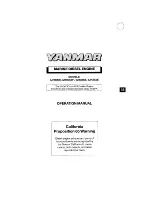
Note
The turbocharger tester -V.A.G 1397 A- is required to provide
an independent figure for comparison. The turbocharger tester
must be set to range I (absolute pressure). A barometer can be
used instead.
– Exit diagnosis function.
– Switch off ignition.
If the specification is not attained:
Checking voltage supply
– Connect multimeter to contacts 1 + 3 of connector using test
leads from -V.A.G 1594D- to measure voltage.
– Switch on ignition. Specification: at least 4.8...5.2 V
– Switch off ignition.
– Check wiring of charge pressure sender as follows:
– Using adapter cable -V.A.G 1598/39-2-, connect test box
-V.A.G 1598/42- to wiring harness of control unit
The engine control unit is not connected by this action.
Note
The charge pressure sender -G31- and intake air temperature
sender -G42- are installed in one common housing in the
charge air pipe.
– Check wiring between test box and connector for open cir-
cuit referring to current flow diagram.
◆
Contact 3 + socket 17
◆
Contact 4 + socket 83
● Cable resistance: max. 2.0 Ω.
– Also check wiring for short to one another, short to battery
earth/engine earth and short to battery positive. Specifica-
tion: ∞ Ω
If no wiring fault is detected and voltage was present between
contacts 1 + 3:
– Renew charge pressure sender -G31- together with intake
air temperature sender -G42-.
– Then, read event memory of engine control unit, and clear
, read event memory.
If no wiring fault is detected and no voltage was present be-
tween contacts 1 + 3:
– Pull connectors off any components which are connected to
, current flow diagrams.
– Check voltage supply and wires on these components.
If no wiring fault is detected and no voltage was present on
these components:
– Renew engine control unit -J623-
.
3
Industriemotoren - Industrial Engines 2009
▶
Workshop Manual for Diesel Engine (2.0 l/36-75 kW_EA 189) 05.2015
344
Repair Group 21 - Turbocharging/supercharging
















































